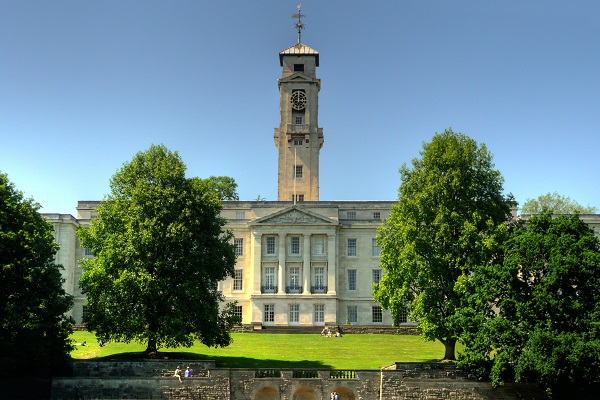University of Nottingham: First direct access to the human auditory nerve could offer new hope for individuals with the most common form of deafness
The first access route to the complex nerve structures of the human inner ear has been developed by Nottingham scientists as part of an international collaboration including scientists from elsewhere in the UK, Sweden and Canada.
Using advanced 3-D models generated through particle acceleration (called a synchrotron), the researchers at the University of Nottingham and Nottingham University Hospitals NHS Trust, working as part of the NIHR Nottingham Biomedical Research Centre, have described an entirely novel treatment pathway to help individuals affected by the most common form of deafness.
The human auditory nerve lies in the inner ear (cochlea). It lies deep in the base of the skull and is encased in the hardest bone in the human body. This has previously hampered the safe delivery of new treatments for hearing loss.
However, thanks to images derived from the synchrotron, researchers have created detailed computer-generated images of the cochlea resulting in the discovery of a safe pathway to the inner ear that will enable new treatments to be delivered directly to the nerve of hearing. This research was published in the prestigious academic journal Scientific Reports, a journal in the Nature Research portfolio.
The images generated by the synchrotron enabled, for the first time, the detailed definition of the arrangement of nerves and blood vessels in the human cochlea. Researchers were able to identify safe passage ways to deliver new treatments to the human inner ear. This will enable the delivery of novel medical treatments that will, for the first time, regenerate the nerve structures that are crucial to hearing and that are permanently lost in many individuals with hearing loss.
Gerard O’Donoghue, an otologist at Nottingham University Hospitals NHS Trust, said: “The inaccessibility of the human cochlea has hampered the progress of curative treatments for nerve type hearing loss to date and these research findings open a vista of opportunities for researchers in this field.”
These findings will enable the safe delivery of regenerative treatments to their target structures within the relatively impenetrable human cochlea, reducing risk in future clinical interventions and paving the way for clinical trials
Professor Douglas Hartley, Professor of Otology in the School of Medicine at the University of Nottingham
The study was funded by the biotechnology company, Rinri Therapeutics and by various grants at the participating institutions, including from the UK’s National Institute of Health Research.
Currently, there are no medical treatment options for patients with permanent deafness. Rinri Therapeutics is developing the world’s first regenerative stem-cell therapies for hearing loss and the company’s pioneering technology aims to reverse hearing loss through the repair and regeneration of the damaged nerves in the inner ear.
Dr Simon Chandler, CEO of Rinri Therapeutics, said: “These results open the door to a region of the inner ear that has, thus far, been inaccessible and will spearhead the first human trials of new cell, gene and drug therapies.
“Rinri’s stem cells are a particularly attractive, novel advanced therapy. Their ability to repair the auditory nerve was demonstrated in a mammalian model. However, its translation into humans has until now been hampered by limited anatomical knowledge and the lack of a safe access to the nerve of hearing within the central core of the cochlea.
“We believe these findings will have an immediate impact on both our understanding of the detailed structure of the nerve of hearing and on future clinical initiatives which are urgently needed to reduce the global health burden caused by deafness.”

